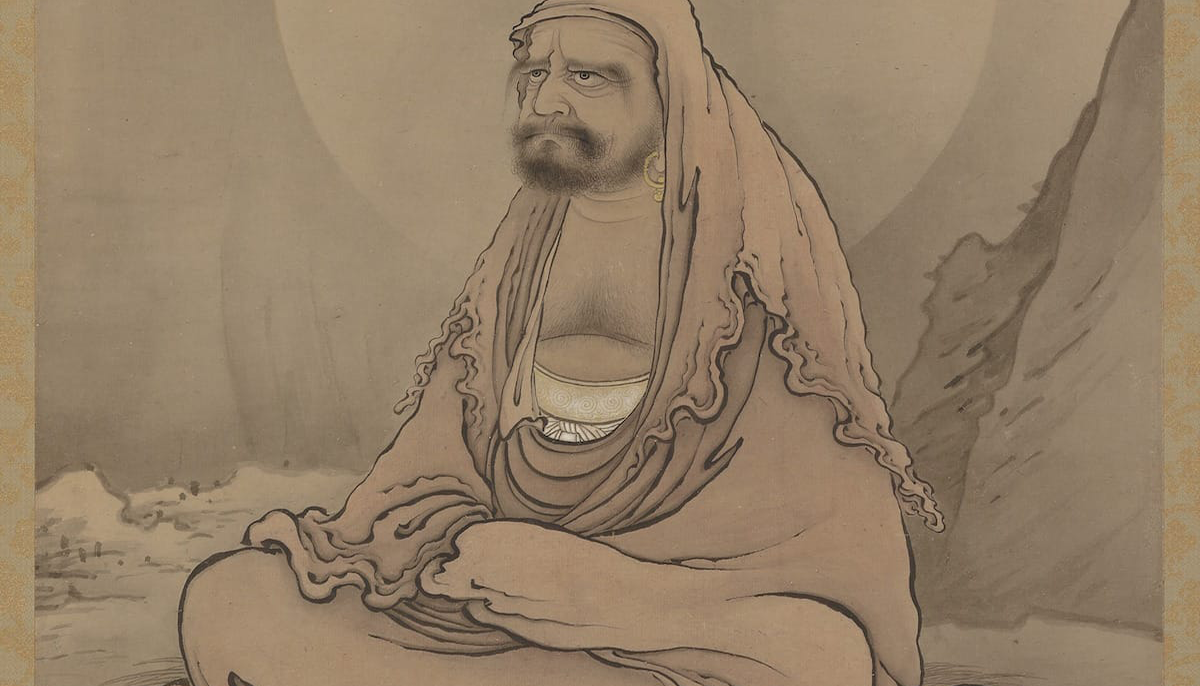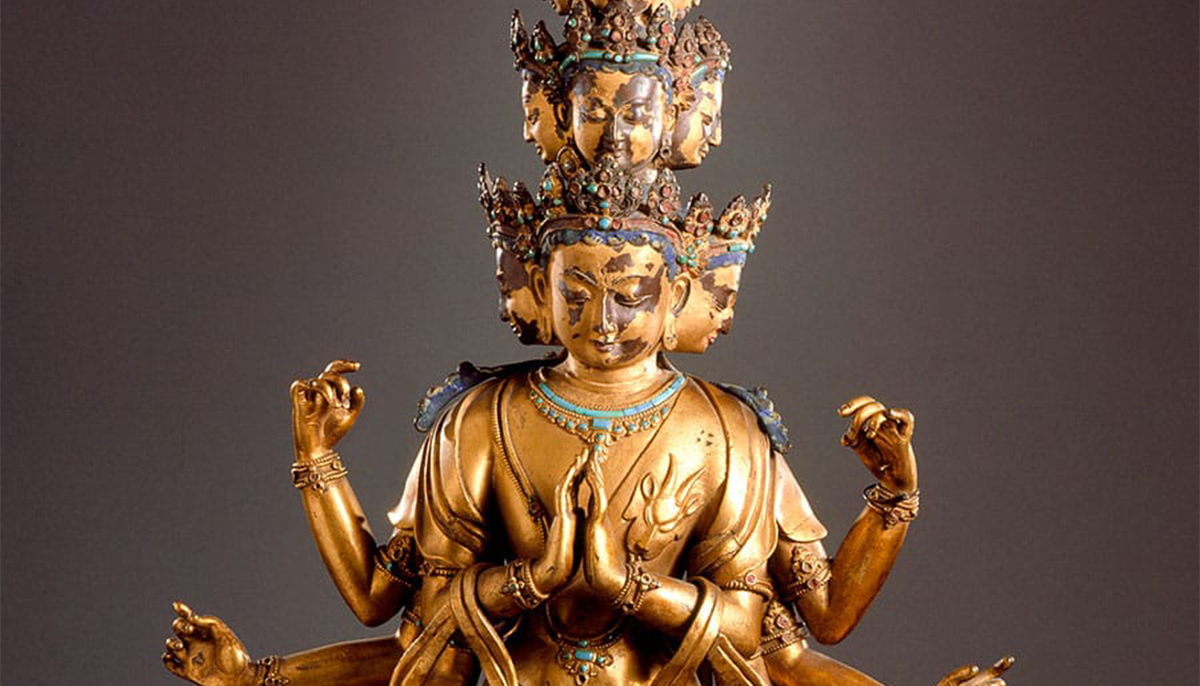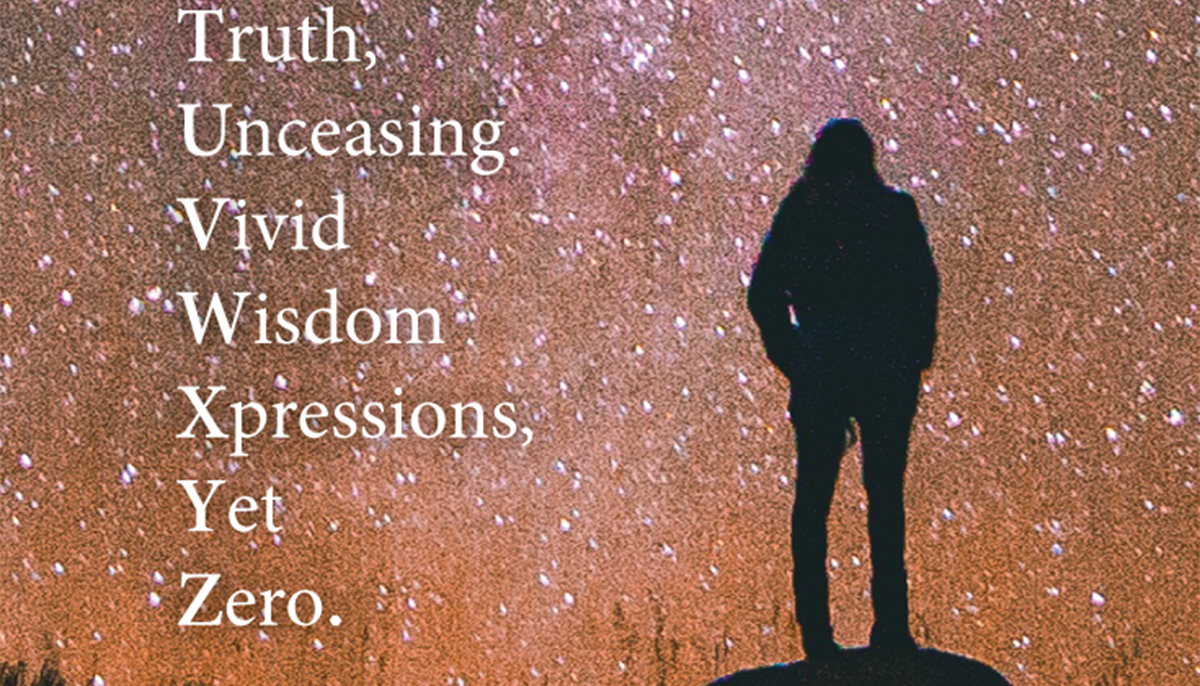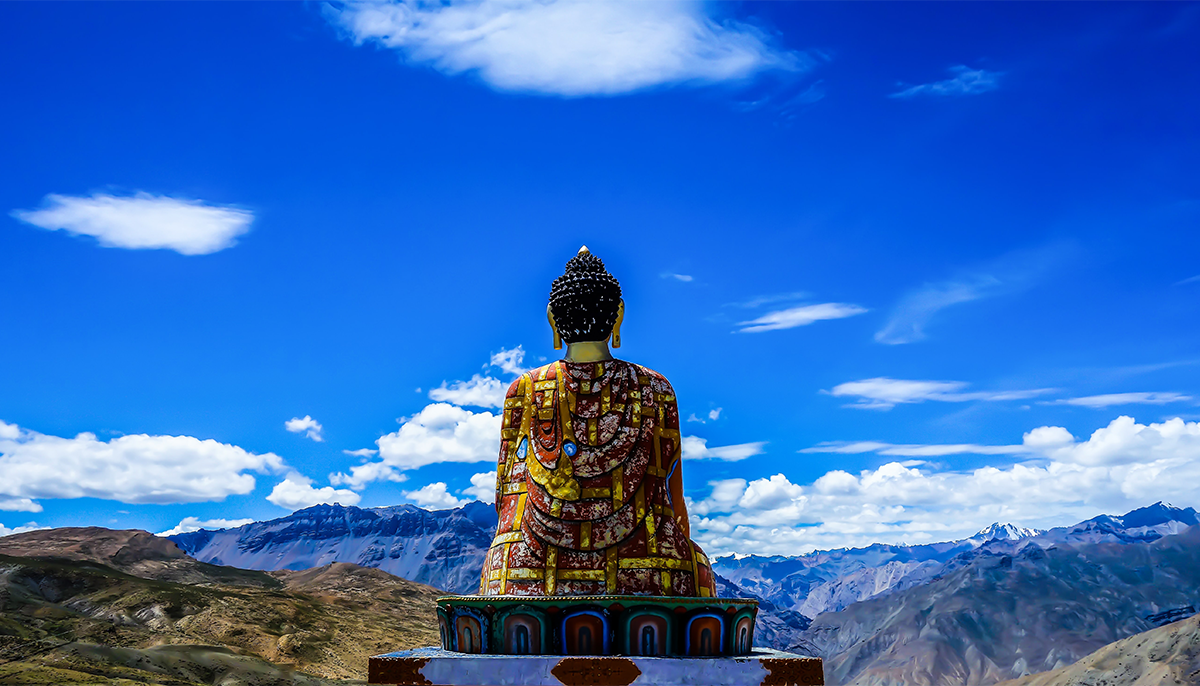What Is the Heart Sutra?
As the late Zen teacher Robert Aitken has written, “the Heart Sutra is a very brief text, abbreviated from a monumental work, the Prajnaparamita Sutra, probably the Astasahasrika edition of 8,000 lines, which was composed just before the Common Era. The Heart Sutra was produced shortly thereafter. it is recited every day in almost all Mahayana temples in Japan, China, Korea, and Vietnam, except those of the Pure Land, and has been recited there every day for 1,600 years and more. Today you will hear it daily throughout the Buddhist diaspora beyond East Asia.” You will also find it recited in Buddhist groups of varying backgrounds in the West and elsewhere.
Explaining the main thrust of its message, Aitken Roshi writes, “The Heart Sutra says that form is emptiness; emptiness is form; form is exactly emptiness; emptiness exactly form. Moreover, sensation, perception, formulation, and consciousness are also like this. This seems to be an unnatural kind of contradictory intelligence, but it is the expression that is contradictory—there is no contradiction in nature. Very strange things live side by side in evident harmony—intimate harmony, even identity. The Heart Sutra is an exposition of nature, essential nature, the way things are.”
What Is Emptiness?
Emptiness is the central insight of Buddhism, and what makes it unique among religions. The Heart Sutra says, “When there is no obscuration of mind”—when we are no longer confused by our external projections and experience the wisdom of emptiness—“there is no fear.” That is why emptiness is so important—it is the antidote to suffering. Read more in “What Is Emptiness?”
Teachings on the Heart Sutra
A New Look at the Heart Sutra, from Thich Nhat Hanh and Norman Fischer
Zen teacher Norman Fischer looks at the famed Heart Sutra and explains why compassion and emptiness go hand in hand. Plus, Thich Nhat Hanh offers his new translation of the Heart Sutra, which teaches the transcendent wisdom that frees us from fear, wrong perceptions, and suffering.

The key term in Buddhism’s Heart Sutra is the Sanskrit word shunyata, usually translated into English as “emptiness.” As the sutra says in its opening lines, “All dharmas [things, phenomena] are empty.” Eyes, ears, noses, tongues, bodies, minds: all external objects—and all Buddhist teachings—are empty.
The Heart Sutra Will Change You Forever
Penetrate the true meaning of the Heart Sutra, says Karl Brunnhölzl, and nothing will be the same again. The secret is to make it personal.

There is no doubt that the Heart Sutra is the most frequently used and recited text in the entire Mahayana Buddhist tradition, which still flourishes in Japan, Korea, Vietnam, Tibet, Mongolia, Bhutan, China, parts of India and Nepal, and, more recently, also in the Americas and Europe.
The Heart Sutra: the Fullness of Emptiness
Emptiness is not something to be afraid of, says Thich Nhat Hanh. The Heart Sutra teaches us that form may be empty of self but it’s full of everything else.

If you are a poet, you will see clearly that there is a cloud floating in this sheet of paper. Without a cloud, there will be no rain; without rain, the trees cannot grow; and without trees, we cannot make paper. The cloud is essential for the paper to exist. If the cloud is not here, the sheet of paper cannot be here either. We can say that the cloud and the paper inter-are. “Interbeing” is a word that is not in the dictionary yet, but if we combine the prefix “inter-” with the verb “to be,” we have a new verb, “inter-be.”
Caught in Indra’s Net
If you want to understand the full truth of “form is emptiness; emptiness is form,” says Robert Aitken Roshi, you must go beyond the Heart Sutra to philosophical texts like the Huayan Sutra, which unpack and elaborate this profound paradox.

I once attended a memorial service for an old grandmother in Mishima, Japan. She had been a Zen student, and members of her family had connections with Shingon and Nichiren sects as well. A priest from each of these three denominations took part in the service, and they joined in reciting the Heart Sutra together.
Bodhichitta: The Excellence of Awakened Heart
The mind of enlightenment, called bodhichitta, is always available, in pain as well as in joy. Pema Chödrön lays out how to cultivate this soft spot of bravery and kindness.

When I was about six years old I received the essential bodhichitta teaching from an old woman sitting in the sun. I was walking by her house one day feeling lonely, unloved and mad, kicking anything I could find. Laughing, she said to me, “Little girl, don’t you go letting life harden your heart.”
Beyond Self & Other
Mu Soeng, author of The Heart of the Universe: Exploring the Heart Sutra, explains Buddhism’s “five aggregates” — form, feeling, perception, mental formations, and consciousness. They cause us to cling to a false sense of self and perpetuate the dualistic thinking that the Heart Sutra seeks to help us cut off.

A great many misunderstandings have taken place in interpreting the Buddha’s teaching of anatta or non-self, but it is important to keep in mind that while the Buddha pointed to a lack of an abiding core, he did not deny an existential personality. In other words, things exist but they are not real. For the Buddha, the individual or the personality was a conglomerate of five aggregates or heaps, or skandhas. In and of themselves, these aggregates are a biological or phenomenological system, and out of their interplay a sense of self is born.
The Heart Sutra in Popular Culture
Being an international phenomenon, the Heart Sutra has found all manner of new expression in music, dance, and other art forms. Here are some our favorites.
Watch this viral video of a Zen priest singing the “Heart Sutra” with acoustic backing
A video of the Japanese band Kissaquo reciting the Heart Sutra went viral, collecting over a million views.
In Kissaquo’s performance of Buddhism’s Heart Sutra, the musical duo adds guitar, drums, and melody to the Buddhist scripture, recited in Japanese. But the track is a crossover hit, going viral on social media in America. That’s an impressive feat for a millennia-old Buddhist scripture. The Heart Sutra is revered by many Buddhists as a perfect explication of the nature of reality.
The “Alphabet Heart Sutra”
Aura Glaser comments on the truth of Buddhism’s Heart Sutra in 26 words — from A to Z.

The Alphabet Heart Sutra came to me whole, arriving with the light of morning. I followed the inner prompting and immediately wrote it down. And once it was written, I felt moved to share it with others.

